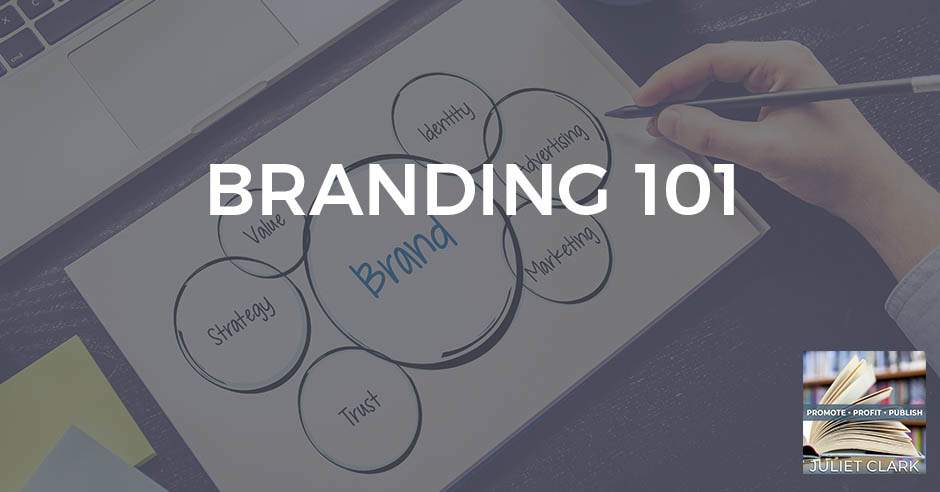
Your brand, your story. In this episode, Kelly Bartell, the founder of The Agency Co., shares his insights on how you can position your messaging to exude your personality in your brand. Start by asking yourself simple questions about your business to get a good sense of your business. Kelly added that the narrower your target, the more helpful it is for the success of your product. Also, being aware of the psychology of color helps a lot in painting and positioning your brand. Find out more from Kelly Bartell by tuning in to this episode now!
—
Watch the episode here
Listen to the podcast here
Branding 101 With Kelly Bartell
We’re going to have a branding expert that’s going to be speaking to us, and who did some incredible work on one of our client’s books. I felt it was worthy enough that we needed to talk to her more, explore what she’s up to, and how she helps people. Before we get started, remember to go over and download your free copy of Breakthrough Author Magazine. You can find it at BreakthroughAuthorMagazine.com. If you’re over on LinkedIn and you want to get a copy without opting in, you can go over to the Breakthrough Author newsletter on LinkedIn and subscribe over there. You’ll get the newsletter dropped in, as well as some other things using LinkedIn Newsletter.
Lastly, our new site is up, AuthorTrafficSchool.com. What we did with this site was we decided that we were going to call the author platform building what it really is. It’s the art of building the platform in a way with the tech that our authors learn how to drive traffic. That’s what it’s all about. You can build a funnel. You can get out there with lead magnets. If you don’t do it in the right way that connects with your ideal audience, you’re not going to drive the traffic you’re looking for.
This is super important when you try to sell books. If you don’t have this perfected by the launch, your launch could be in big trouble. Go check it out. We have everything. We have DIY courses for those of you who like to work at your own pace. We have our big program, which is one-on-one coaching and building, and taking it step by step. We have a big six-month program. We are willing to talk to you about taking pieces of that program if you already have parts of your platform built, www.AuthorTrafficSchool.com. Go check it out.
Our guest is Kelly Bartell. Kelly spent fifteen years living that advertising life you see on TV. All I can imagine here is Melrose Place back in the ’90s when Heather Locklear is clearing off her desk to have sex with who knows. They had sex at the office all the time. I thought that reflected the advertising world. I’m going to have to query Kelly more about that.
Kelly ran a creative team for a global agency. She pitched a lot of business and stayed up late. I get that. That is a 24/7 job. I’m surprised she stayed there for fifteen years. She played some foosball, and she loved it. In the process, she learned so much about what makes people and businesses tick. When Kelly went out on her own in 2020, she did it because there was one thing her glossy agency job wouldn’t give her or couldn’t give her.
That was the rush of working with startups and individuals growing their dreams. That’s what she does now. She builds brands for women entrepreneurs and creatives. It’s everything she dreamed it would be. I’m sure it is. I’m sure she gets to work her own hours versus agency hours now. Stay tuned for my interview with Kelly.
—
Kelly, welcome to the show. It’s great to have you.
Thank you. I’m so glad to be here.
Fifteen years of living that advertising life like you see on TV, and I actually shared the Melrose Place, sex on the desk. I’ll have Kelly tell a story here. She’s got to think of a story. I want you guys to know that advertising is a high burnout job or career because there is so much that goes on that. It is like on TV. Before we go there, if you’ve ever watched Bewitched from the standpoint of an account services person, what Darrin Stephens goes through that the client is always right is right on. The things you have to do to make the client right are sometimes not in your best interest. I don’t know if I said that delicately.
That’s all the politics of agency life. That’s why they don’t let creative people like us talk to the client because the client is always right and it makes us cranky. We’re not good at being nice about that always.
I had someone that gave me a voodoo doll. I used to be on the phone like, “Yes, of course. We can do that.” We’re beating that poor little doll to death. Tell us a good story from your days.
I was trying to think of what’s a good illustration of the life that we no longer lead when we talk about the agency life that you see on TV. This won’t be a political story, but I want to bring up Trump and that show that he had, The Pitch. It was maybe 5 or 10 years ago. If you remember the show, they would film the pitch of an idea, a TV spot, a new product, or what have you.
It looked like a joke, but that’s what it was like. You walk into a boardroom with stone-faced people, be at your most creative, pitch ideas, and have people tear boards in half and throw them on the ground. That was quintessential of the time. I remember we did a lot of business pitches of this type. I used to love pitching. I still do. I love getting up in there and talking about the power of an idea and all of that.
We went into a pitch. They had me posed as an account person because I was the right age. I was probably 28 or 30. I didn’t know a lot anyway. What I did know was about creative art and the creative idea, but they wanted a young person to talk about the strategy. They said, “You’re it. You’re going to get up there and do it.” I can still feel the sweat running down my back as I stood in front of this crowd of probably twenty businessmen in suits. I pitched some loyalty programs, the strategy behind them, and the math.
I was like, “I have no clue what I’m talking about. Don’t ask me any questions.” As we left, we filed out like school children, and then the next agency was waiting in the hallway to file in. There’s that. You’re at the hotel the night before the pitch practicing in the rental conference room. The conference room next to you would be the competitive agency pitching their stuff, and you were trying not to make eye contact. It was bonkers.
I wore readers the first couple of times I met and pitched with the clients. It was interesting because I finally got to the point where I could take them off, but I didn’t. You can see close up, but you can’t see far away. I couldn’t see the look on their face because I didn’t want to see the disappointment or what was going on. I just wanted to give it and get out.
That’s such a good idea if you’re feeling nervous about it.
We’re going to talk about branding. That’s what Kelly does well. It’s pitching, messaging, and everything to do with getting your brand right. Let’s first go to the conundrum that you face with personal versus business versus book. How do you get that all in alignment?
It is a tricky story problem. I want to honor that quickly at the beginning. As experienced business people and people who live in the world of entrepreneurship. If you’re launching a business, it’s not one-dimensional, but it’s just one brand. If you are launching the next Nike or whatever it might be, it’s an entity that sells things. That is one focused message.

Branding: As experienced business people and people in the world of entrepreneurship, if you’re launching a business, it’s not one dimensional but one brand.
When you are a person with a business selling a product, in this case, a book, that’s three layers of branding that you have to consider. To your point, they do have to line up. The simplest one to think about in the context of this show is the book itself. What’s the brand of the book? What is the book? What does it feel like? What is the main message that you’re conveying through your book?
How does your business relate to the message of the book? Let’s say I’m writing a book about branding, which I’m not but maybe I should. I’m writing a book and it’s about branding. I want it to feel lighthearted, yet informative. I’m going to pick a color scheme that goes with that and some imagery on the front that reinforces this idea.
I want to think about the work that I do outside of this imaginary authorship. That is the work that I do as a branding expert. I have to understand that I have a branding book written by an artist and branding expert. I am not my book, but I’m connected to it in a way that’s very tangible. I also am lighthearted and informational.
That’s the service that I provide. That brings us to the personality of you, the author and business owner. You want to think about someone like Michelle Obama or Oprah. These are powerful humans who have a brand on their own. Knowing who you are and what position you have in the world, you got to be able to talk about that. Does that make sense? It’s these three layers of the person that I am, the place that I hold in the world, the service I provide to my community, and then the artifact that I can sell that supports all of that. They are connected but separate.
As a new entrepreneur, you’re looking around at your competition and seeing what’s working. You have to stay in your own authenticity. Who is that audience and how am I going to speak to them? We have all of the people in traffic school read why they buy. They now have a language for their buyer, but they also have to show up in an authentic way in their business because that’s why people hire you. Also in your book because your book is leading to bigger things. You do have to keep it all in the same space. When you work with new entrepreneurs, they get bored with their brand. They want to rebrand right away, but it’s not something they should be doing. Can you speak to that?
The first thing that you mentioned about looking around and seeing what other people are doing can be helpful, but it’s a trap. You wind up being inauthentic if you try to copy what you like from other people or even emulate it or take inspiration from it. What I find helpful when looking at competitive messaging and branding is that it can tell you what not to do from a branding standpoint.
We may touch on color in a little bit. If you walk into your section of the bookstore that you can imagine yourself living in someday and 50% of the covers are red. Don’t pick red no matter what because you’re going to blend in. It’s the same with branding and messaging. If you like something that someone else is doing, feel free to like it, but do something different so you stand out.
This brings me to the point of consistency. Pick what you’re going to do or zig one and another zag, but also staying consistent with that message is so important. One of the truths of communication is you have to communicate a brand message seven times before people hear where it syncs in. If you’re changing regularly. If you’re changing your tagline, the way you talk about your book, your expertise, or your business too much, it confuses people. You wind up losing your audience.
Every time I do an introduction, I call myself an executive creative director and storyteller. Maybe I don’t want to do that anymore. Maybe I want to talk about something a little bit different. I don’t because consistency is important. There’s always going to be someone who hasn’t met me before and needs that basic starting point. When you start to get itchy in your messaging, because you’ve said it a lot, remember your audience hasn’t heard it a lot, so keep saying it.
Didn’t you tell me a minimum of seven times? That doesn’t mean that you put it out there every day for seven days, and then your message changes though.
The average shelf life of something like a brand position or a brand is 3 to 5 years. I absolutely encourage my entrepreneurial startup clients to think about reinvention as their business evolves. Slow and steady win the race here. Branding is hard work because you have to be thoughtful and distill that message down. Once you’ve done that work, stick with it for a while and get the feel of it. Don’t try to do that hard work over and over again. We’ve already done it.
Think about reinvention as your business evolves. But do it slow and steady because it does win the race here. Branding is hard work because you must be thoughtful and distill that message down. Share on XI think we did our last one in 2016. We’re due. I don’t know that I’m quite ready. I like what I have still, but there will come a time when I will wake up and say, “Enough.” The average is 3 to 5 years. When people work with you and they do that startup, the message is to wait until the brand matures to do some morphing of that.
It can’t be a 180-degree turnaround either because that’s where we get a lot of people who tell us, “I have a list of 3,000 people, but I switched, so maybe 2/3 of them aren’t with us anymore. That’s the result of something like that. They made a dramatic, “I was a time and management person, now I’m a healer.” Those two things don’t match together.
You can’t make that big pivot in the middle of something even though you get tired of it. I know I get tired of my own brand as well sometimes. Let’s talk a little bit about the feel. If I were to work with you and come in. I would imagine you would want to ask me some questions about my brand. What kind of questions would you ask me?
To get a good sense of your business, there are only a few questions but they’re hard. It’s hard work because what we start with is your position. While that feels easy, it takes a little bit to unpack it. I would ask you questions like, “What do you do?” That’s a hard question for people to answer because people do a lot of different kinds of things all the time in their job.
What I do as part of my job as a brand strategist is when people tell me, “I do this strategy and these actions. I provide these services and I do it in this way,” I look for the through line. What brings all those things together? That’s what you do. I’ll ask, “How do you do it? What’s your process? What lights you up about that? What brought you to this place? Where did you come from? Who is the competition? Who do you serve?”
I’m getting a landscape of both what you do, why you do it, who else is doing it, and how you’re different. That last piece of how you’re different is what’s going to lead you to an ownable position in the market. Once you know that thing like, “This is the thing that makes me different as a producer of the product,” that’s what you can stand on.
We start there, and then we move away from strategy, and more toward tone and feel. I always ask my clients to make for me what we call a mood board. It’s a combo platter of brands you might admire out in the world and want to emulate. The temptation is to be, “I want to be like that brand. I want to look like that brand. I like the logo that that brand has. I like the feeling that I get when I experience this brand.”
It’s things like that, plus colors that are inspirational and feel like a good starting point imagery. I ask people to pull those things that speak to them, and then let’s talk about them. That’s what makes the mood board. That then is a tool that your branding professional, if you’re using one, will use to figure out what your unique look is.

Branding: Pull those things that speak to you, and then let’s talk about them because that’s what makes the mood board. That is a tool that your branding professional will use to figure out your unique look.
That can be anything from font choices to photography versus something hand-drawn. Do you want to use illustrations? Is there an art piece that needs to be created? These all become questions that you as the brand don’t need to answer, but we will want to have an opinion on at the end of the day.
I’m going to back up a little bit here. It sounds like you’re taking my personality, my authenticity, and all the stuff I brought you that I like to fair it out. You make that in alignment with what my brand should look like to keep my business and me in alignment.
I’m glad you pointed that out. What’s so cool about working with entrepreneurs like authors is you get to do that. You get to take what’s magical about the person creating the work and infuse it into the brand. There’s this alchemy between the person creating the brand and the target audience because there is a connection between you as the author, your audience, and the book. The brand’s job is to speak of both of those things at the same time.
When you hire someone to do your funnels or to put together whatever it is on your platform, this is why market research is so important. If you don’t do the market research and you go to Kelly, and you say, “Make me,” Kelly has no idea where to start. That’s why we always tell people like in the Build Your Author Avatar Course, you have to do that market research.
You and I are coming from agencies. How much do agencies spend on market research? Even before we go into this pitch, we have to have them down to make everything relatable. You have to be able to tell Kelly who’s your competition. You have to know that. I send people out to do that anyway because I want to know what your competition is selling.
What does it look like they’re doing that’s successful? What does it look like they’re doing that’s not? Kelly needs to know those same things in order to get you well-branded. You’ll probably agree with this. If you don’t have that down, and then you take your business to a marketing agency, it’s going to be a flop because they’re not going to do that research for you.
They’re going to trust that you have done it. If you don’t do it well, it’ll just flop. If you are selling bread to people who don’t eat gluten, you’re not going to sell any bread. How’s that for an analogy?
They will trust that you have done your research, but if you don't do it, it'll just flop. Because if you sell bread to people who don't eat gluten, you will not sell any bread. Share on XThat is very true. Most of the time when I see an intake for an online marketing company, I will ask questions like, “Who is your ideal client?” They’ll take it straight off there. They’re not going to get into a deeper query. They’re going to assume you already did this work with someone like Kelly and got it done.
It’s like a psychological story problem almost when we’re thinking about it. I know this call isn’t about research, but it is so prevalent and important in everything we do. We’re not just kidding around when we talk about it. The narrower your target is, the more helpful it is for someone like me especially, but for the success of your product.
You can tell me, “Take this bread thing all the way to the finish line. I’m authoring a book about bread and I’ve got bread recipes and all this content about all of the things.” You could say your target is not the people who eat. That’s too broad and includes gluten-intolerant people. It’s not eating people who eat bread. It’s people who love bread. It’s not just people who love bread, it’s people who love artisan bread that is made with care and thought.
If you can come to a branding person and say, “I want to sell this book to bread-loving people who are artistic and artisan-thinkers,” that tells me a lot about what I need to do with the design and the messaging of the brand to speak to those people. It’s way more effective to have a focused message toward a focused audience because it’ll make more sense to absolutely everybody.
It definitely does. Once we give our people the Builder Author Avatar Course and have them read why they buy, they will come back and say, “I need to rewrite parts of my book. I wasn’t focused very narrowly on who I wrote this book for.” That’s why you need to work with someone like Kelly and have that stuff done. Even before you start writing that book, know exactly who you are speaking to as part of this process.
Let’s talk a little bit about color before we sign off here. I get people all the time. I will look at their website. We’re trying to coordinate everything with the book. They’ll tell me what they want on their book cover. I’ll say, “Wait a minute. You just told me that your audience is nurture, yet you have all of these colors that don’t support nurture.” The example I always like to give is the red hot healer. Red doesn’t fit healing. Can you talk a little bit about the psychology of color in all of this?
There is a psychology of color. As part of my Bachelor of Fine Arts, I went to art school and got a design degree in all the rest of it. There are classes you can take on color theory. If you’re new to color theory and you’re just starting to think about, “What colors do I want to choose for my brand, my book, or my website?” It is so helpful to do a quick google search and it’ll tell you a lot. What colors are cheerful? It will give you the internet’s opinion on that. It will start to narrow it down fairly quickly.
I know you also have a color guide within your curriculum, which is also helpful. The psychology of color is both very specific and also reliant on its circumstance. What I mean by that is you can know that purple is a color of luxury because it’s the color of royalty. That’s where it lives in our brains. Not all purples are created equal. When you think about a brand or a book and you think, “I love the color purple. I’m going to use the color purple for my book,” but your vibe is not rich or royal, or you want to be accessible and easy breezy, you might be able to get away with a light purple. It’s just a hint of what you’re getting with a deep true purple

Branding: The psychology of color is both specific and reliant on its circumstance.
For something like the red hot healer, red is next to yellow, the color of caution. Red tells us heat, passion, and also danger. None of those things align with healing. What I find interesting about that example is that you have that tension then. If you’re calling yourself the red-hot healer, what kind of heat are you bringing to the table? For some reason, I haven’t read the book, but do you want to lean into that danger? If we’re curious about the psychology of color, red is the color of blood. That’s why it takes us to this violent and dangerous place.
You could potentially lean into that and the shock value of that if we’re talking about red-hot healing. That could go somewhere interesting, but just on the surface of things, it doesn’t get you that place. Yellow is cheerful, but also a caution for our brains in particular. I could talk about this forever. Yellow and black together is the highest contrast color combination you can achieve. It’s not black and white but black and yellow because of the ways our brains are wired.
If you want to have a very disruptive and interruptive design, use black and yellow by all means. Know also that it’s going to be jarring. People will be cautious of it because we are trained to be cautious of things that are black and yellow. Think about those signs on the side of the highway. If you were to go the wrong way up the on-ramp, the signs that say “Don’t go this way” are black and yellow.
If you want to have a very disruptive and interruptive design, use black and yellow by all means, but also know that it's going to be jarring, and people will be cautious of it because we are trained to be cautious of things that are black and yellow. Share on XThe thing with the red hot healer is she’s a beautiful redhead. Would you know that if you didn’t see her picture and you just saw some marketing? I think that’s where the disconnect went there. Kelly, you are developing a course for Author Traffic School on branding. Do you want to tell us a little bit about what you’re doing there? Guys, we’ll have it up on the site for you to purchase as well.
I would love to talk about it. I am preparing the content now. It’s called Building a Brand. It’s an online course for authors specifically. As we talk about targeting, my target for this course is people who are authors and writing books. It’s a four-part course and it covers these basic things that we’ve been talking about.
I’m going to go into what a brand is in the first place. What it is and why it is important to think about branding when we think about authorship. We’re going to talk about identifying your brand position and how to do that. I know that there’s a lot of nuance to that in your course. Your position as an author and the position of your book in the marketplace, and understanding that as it pertains to your brand will be a whole section.
We’re going to talk about crafting your brand style. That’s where we get into the color theory we were just talking about. How do you deal with fonts? What kind of style do you both like because you want to love your book every time you pick it up? You want to love your brand and your website. What is functioning well in terms of your audience? How do you walk that line? We’ll talk about bringing it together and what that looks like. When you bring all of those components together, that’s when you wind up with things like websites, logos, and book covers. That’s how you wind up with a set of assets that line up. They work together as a family.
This is great. You’ll be able to find that. We’ll have it up on Author Traffic School. If people want to skip the course and go right to, “Give me some, Kelly,” where do we find you?
You can find me at my brand-new site, which is KellyBartell.com. I also have had my own brand for between 3 and 5 years. I had to redo my own. Check it out anyway. I’m very proud of it. I live there. I also live on LinkedIn at Kelly Bartell, and on Instagram, @KellyBartell_WorkEdition.
Thank you so much for being on. I hope you guys learned a lot because this is truly your first step when you start putting everything together for your new business or your book. Whatever it is that you’re launching. Thank you.
Important Links
- BreakthroughAuthorMagazine.com
- Breakthrough Author – LinkedIn Newsletter
- AuthorTrafficSchool.com
- Build Your Author Avatar Course
- KellyBartell.com
- Kelly Bartell – LinkedIn
- @KellyBartell_WorkEdition – Instagram
About Kelly Bartell
 Kelly Bartell spent 15 years living that advertising life you see on TV. She ran the creative team for a global agency. She pitched a lot of business. She stayed up late. She played some foozball. She LOVED it, and in the process learned so much about what makes people (and businesses) tick. When Kelly went out on my own in 2020, she did it because there was one thing her glossy agency job couldn’t give her: the rush of working with start-ups and individuals growing their dreams. So that’s what she does now: builds brands for women, entrepreneurs and creatives. And it’s everything she dreamed it could be.
Kelly Bartell spent 15 years living that advertising life you see on TV. She ran the creative team for a global agency. She pitched a lot of business. She stayed up late. She played some foozball. She LOVED it, and in the process learned so much about what makes people (and businesses) tick. When Kelly went out on my own in 2020, she did it because there was one thing her glossy agency job couldn’t give her: the rush of working with start-ups and individuals growing their dreams. So that’s what she does now: builds brands for women, entrepreneurs and creatives. And it’s everything she dreamed it could be.
Love the show? Subscribe, rate, review, and share!

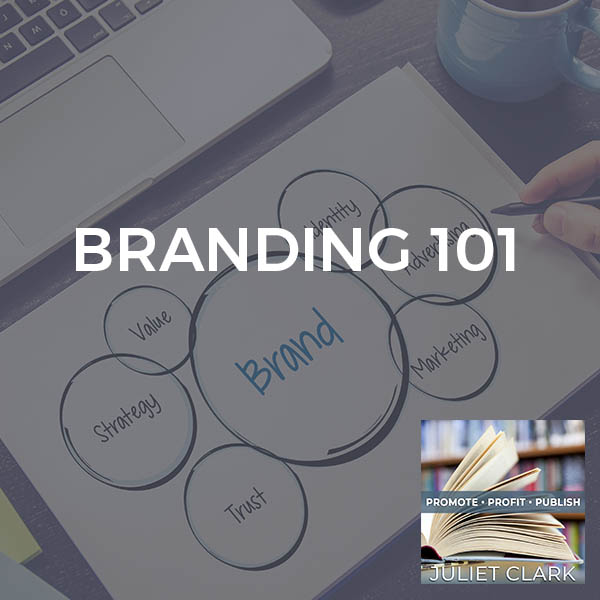


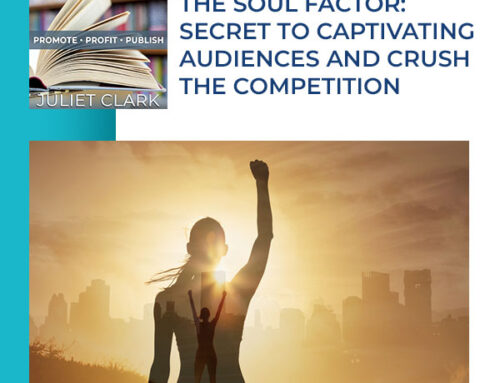
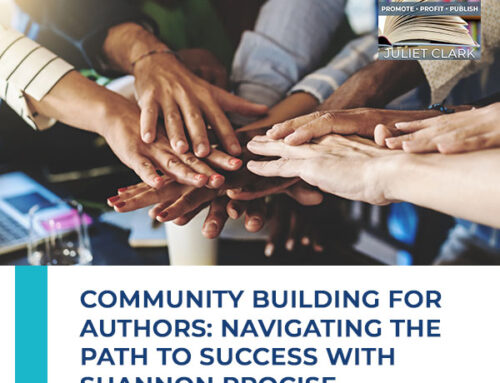
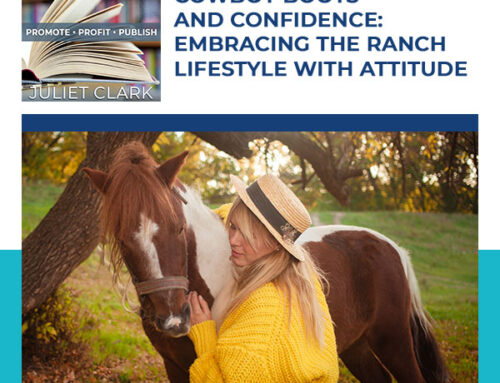


Leave A Comment